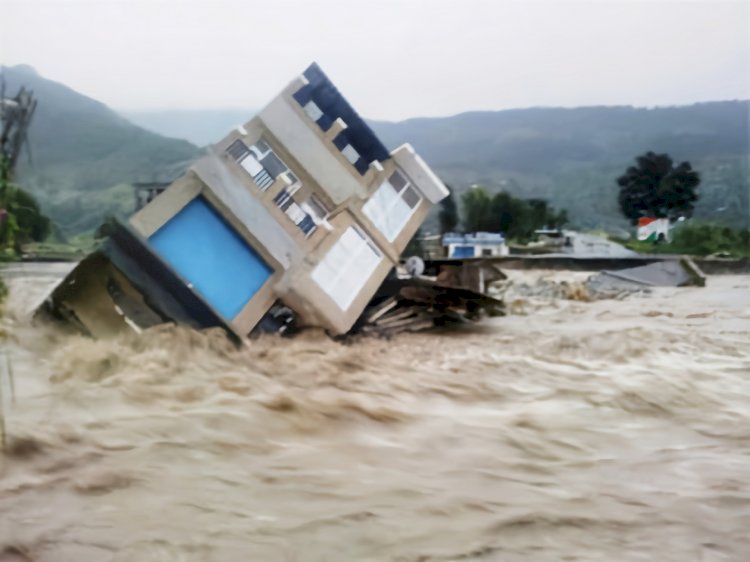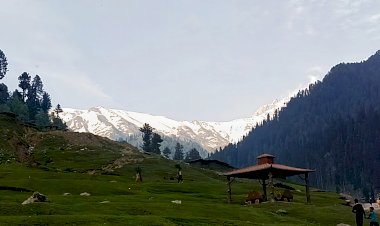Repeating Mistakes: Poonch's Failure to Learn from Past Floods

As the rains loom over different parts of Jammu and Kashmir, particularly the Pir Panjal region, there is a sense of unease in the air. This apprehension stems from the fact that the region has been witness to several devastating floods in recent years. Despite the catastrophic events that unfolded in 2014, it seems that the lessons learned from that tragic episode have not been fully embraced. The time has come for both the people and the administration to take proactive measures to prevent further loss of life and property in the face of recurring flood-like situations.
The memories of the deadly 2014 floods that engulfed the entire state are still fresh in the minds of the people of Jammu and Kashmir. The Jhelum River, swollen beyond its normal capacity, breached its banks and inundated cities and towns. Homes, shops, and businesses were submerged, and countless lives were disrupted. The situation was particularly grim in Poonch, where the floods caused widespread destruction, destroying structures, crops, and business establishments. Many of these losses were attributed to the construction of houses within the red zones along the river, a clear violation of safety guidelines.
Even after the calamitous floods of 2014, we witness a lack of sensitivity among certain individuals towards the environment. The construction of a colony right on the banks of the Poonch River is a glaring example of this insensitivity. Locally referred to as the 'Suicide Colony,' these houses represent a brazen challenge to nature itself. While the Poonch administration issued notices to some, the actions taken remain shrouded in mystery. The question remains: why has no concrete action been taken to prevent further illegal encroachments?
The illegal encroachment and construction of concrete structures may obstruct the natural flow of the river, leading to a rise in water levels and potential diversion of the river towards the lower part of the city. Poonch river has a bend in its flow near the Police line, indicating that this construction is interfering with the historical course of the river. One can imagine the disastrous consequences if another flood similar to the 2014 situation were to occur.
In Surankote, the disastrous consequences of illegal construction and encroachment were witnessed just last year. Even a brief spell of rainfall resulted in a flood-like situation. Within moments, water surged into houses and shops, causing losses amounting to crores of rupees. This catastrophe was a direct result of the encroachment on drains and nallahs, which obstructed the natural flow of water. As a consequence, the water found no outlet, inundating the streets, roads, and ultimately entering people's homes and businesses.
Tragically, history repeated itself in Surankote last night (24-05-2023), as the same flood-like situation occurred once again. It is disheartening to witness that, as the rains cease and water levels recede, people tend to forget the gravity of the situation, naively believing that it will not happen again. This complacency is our biggest mistake. Nature adheres to its own laws and is not subject to our whims and wishes. Instead, we must adapt ourselves and our practices to align with the natural environment.
The recurring flood-like situations during the rainy season serve as a stark reminder that tampering with the environment can have severe consequences. Yet, it appears that we, as a society, have failed to learn from past mistakes. The urge for illegal construction and encroachment continues unabated, disregarding the potential risks posed to lives and livelihoods. The environment must be respected, and limits should not be pushed beyond reason.
It is imperative for the people recognize the need for collective action and responsibility. Individuals must take a step forward and refrain from engaging in illegal construction or encroachment. Building within designated red zones along rivers or obstructing natural drainage channels is a recipe for disaster.
At the same time, the administration bears a crucial role in implementing and enforcing stricter regulations. By closely monitoring construction activities, conducting regular inspections, and taking swift action against violators, the authorities can play a vital role in preventing future calamities.
Furthermore, public awareness campaigns about the dangers of encroachment and the importance of preserving the natural environment should be launched. Educational initiatives can be undertaken to educate the masses about the potential consequences of their actions.
Overall, Jammu and Kashmir has experienced the devastating impact of floods far too often. The recent flood-like situations in the Pir Panjal region, coupled with the destructive events of 2014, should serve as a wake-up call. It is high time that both the people and the administration work hand in hand to protect lives and property from the wrath of nature. By embracing responsible practices, respecting environmental limits, and taking proactive measures, we can ensure a safer and more sustainable future for Jammu and Kashmir.
The author can be reached via email : editorkaangri@gmail.com or contacted on his WhatsApp no. 9858460733










